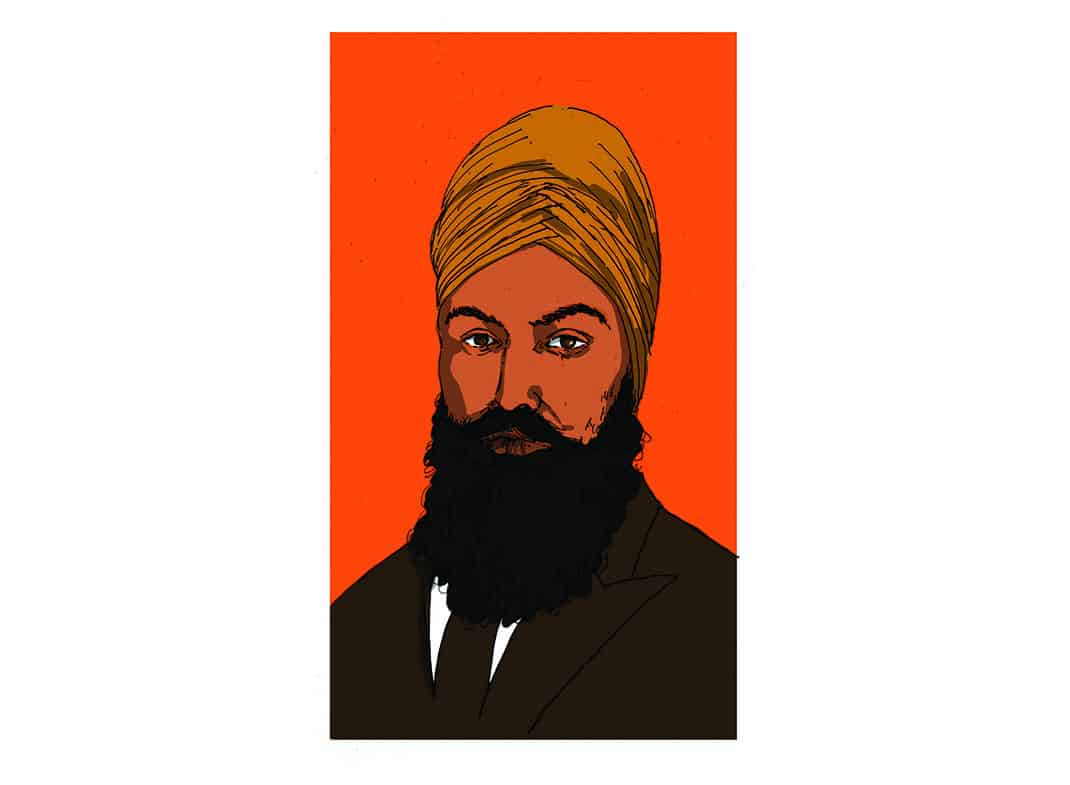When I first met Jagmeet Singh, I was reluctant. Upon prompting from a close friend, I had half-heartedly agreed to participate in a charity initiative led by Project Ramadan, a non-profit organization that provides food baskets to local families in need. My friend dangled an opportunity to meet Singh, who was expected to drop by the event to show his support, and I agreed out of politeness despite not really caring for the idea.
Though I hadn’t yet voted in any election apart from that of the University of Toronto Students’ Union, I considered myself a skeptic first and a liberal second. I was wary of politicians; everything they said seemed scripted, their every move calculated to secure votes. Jagmeet Singh did not seem like an exception.
At the time, Singh was still campaigning for the leadership of the federal New Democratic Party (NDP). To my surprise, he kept his speech at the event short and simple, praising Project Ramadan for the initiative they had undertaken, lamenting the fact that despite federal budgeting, many families still went without food, and vowing to help combat this problem if elected.
Though I wasn’t on his team for the build, Singh approached our group afterwards. He greeted my volunteer group with a smile and a “hello,” and then he repeated the word in several languages. “Have I missed any?” he asked pleasantly. He inquired about what languages we spoke so that he could try his best to converse with us.
Despite my initial hesitation, Singh put me at ease; his actions seemed genuine and honest. Unfortunately, our meeting was too short for me to ask him about his policies in depth, and it slipped from my mind entirely until an incident that took place this fall.
On September 11, during an NDP rally in Brampton, Singh’s speech was interrupted by a racist heckler who accused him of supporting Shariah law and the Muslim Brotherhood. Instead of fighting back, Singh replied to her by telling her that he loved her, supported her, and believed in her rights — even as she continued to yell and invade his personal space.
The video of Singh’s response to the heckler went viral and was covered by national and international media. His “love and courage,” as he put it, was admirable to see — and it was something I wanted to see more of.
On September 30, 2017, I cast my ballot in favour of Singh in the NDP leadership poll. The next day, the federal NDP announced him as its next leader. Singh’s election was met with overwhelmingly positive reactions from visible minority Canadians and from prominent Sikh-Canadian social media personalities like Jus Reign and Babbulicious. There was joy at finally being represented in positions of power, and there hope because his win shows that minorities can overcome the numerous structural barriers set up against them.
To an extent, these reactions included disbelief. Singh’s win marks the first time a visible minority has headed a major Canadian political party at the federal level. Canada has come a long way since the Komagata Maru incident of 1914, in which the Canadian government forced a ship of Indian passengers — most of whom were Sikh — to return to India, despite both India and Canada being British subjects at the time. The Canadian government only fully apologized for this incident last year.
Of course, race relations in Canada still have a long way to go. On Singh’s first day as leader, Susan Bonner, host of CBC’s radio show The World at Six, tweeted a picture of Navdeep Bains, Canada’s Minister of Innovation, Science and Economic Development, and a fellow Sikh-Canadian, mistaking him for “Canada’s newest federal party leader.” She later clarified that she had meant to write that Navdeep Bains was only talking about the new NDP leader, but the damage had been done. The ‘all people of colour look the same’ rhetoric remains deeply ingrained in North American society.
Later that day, CBC correspondent Terry Milewski asked Singh about his opinion on the Air India bombing of 1985, and how posters of its alleged architect, fellow Sikh Talwinder Singh Parmar, occasionally pop up during celebrations of Vaisakhi, a religious festival in Hinduism and Sikhism. The questions were asked with no provocation by recent events and without any context; it seemed as if Singh was asked to weigh in simply because he is a Sikh and South-Asian.
Muslims and South Asians continue to face pervasive double standards. Instead of just being responsible for themselves, they are taken as representatives of their entire race or religion — and thus they are constantly expected to disavow and condemn any and all religious extremism, violence, and terrorism engineered by ‘Muslims’ or South Asians. The same cannot be said for their white counterparts. We would not ask white people to condemn the actions of George Zimmerman, Dylan Roof, and recent Las Vegas shooter Stephen Craig Paddock simply because they are of the same race.
Singh has faced obvious racism and xenophobia throughout his career, and there is no indication that this will stop with his election. One only has to look to the comments section of any article he is mentioned in to come across racist remarks detailing why he will make a terrible leader, both for the NDP and for Canada.
Nonetheless, his election marks a turning point in Canadian history and a step in the right direction. I am hopeful that, like all the other barriers so far, Singh will overcome this. How? With love and courage.
Zeahaa Rehman is a third-year student at UTM studying Linguistics and Professional Writing.


